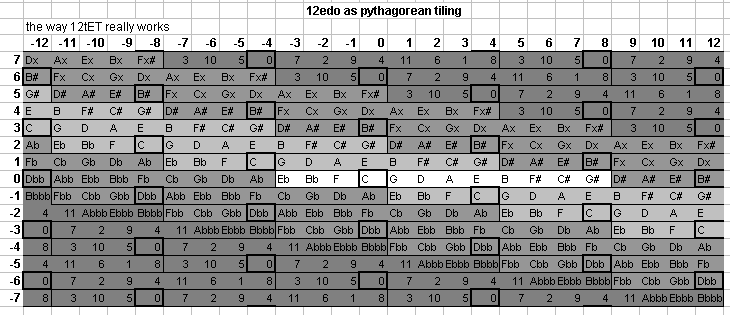Enharmonic
For example, in the 12-EQ tuning, C# and Db are
enharmonically equivalent, i.e., the same note.
Below is a
lattice diagram
showing a "standard" Eb-to-G# 12-tone
Pythagorean tuning
in white, its
syntonic-comma equivalents
(i. e., same spelling)
in the lightest shade of grey, and enharmonic equivalents
(i. e., different spellings represented by the same
12edo
degree)
in darker shades of grey:
This usage of enharmonic equivalence also occurs in other tunings.
For an example, see the final graph in the
"decimal" dictionary entry.
See also enharmonicity
see also
diatonic and
chromatic
Marchetto, however,
specified three types of semitone and called the third,
naturally enough,
the enharmonic; however, his
names were matched with the intervals differently than
in traditional theory.
see
my paper on Marchetto
[from Joe Monzo,
JustMusic: A New Harmony]
See Enharmonion
[from John Chalmers, Divisions of the Tetrachord]
